BIC briefs on copyright trials concerning short videos
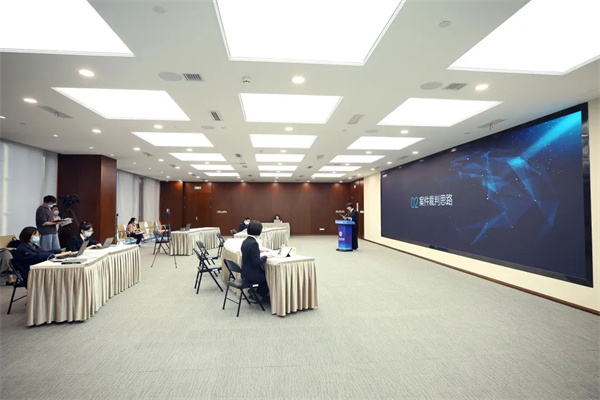
The Beijing Internet Court (BIC) held a media briefing on trials of copyright cases concerning short videos on April 20.
From September 9, 2018 to February 28, 2022, the BIC accepted 107,982 internet-related copyright cases; Among them, 2,812 cases, or about 2.6 percent of the total, involved short video copyright infringement, and 2,026 of them were concluded.
Case features

Li Weina, head of the Research Office of the Beijing Internet Court, hosts the media briefing. [Photo/Beijing Internet Court]
The number of short-video-related copyright cases increased from 540 in 2019 to 729 in 2020 and 1,284 in 2021. Litigants were mostly long and short video platforms. There were 1,680 cases in which at least one party was such a platform, accounting for 59.4 percent of the total. The alleged infringements were mostly duplication, including cutting clips from long videos and adding background music to short videos. The case types and dispute focuses were much alike; the defendants' duplication behavior was generally accumulative instead of random.
Ruling concepts
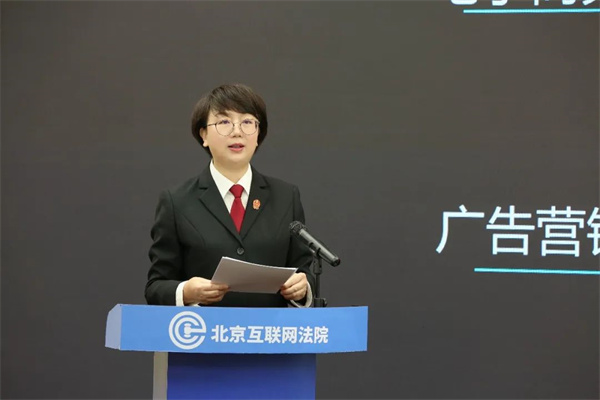
Vice-president of the Beijing Internet Court Jiang Ying. [Photo/Beijing Internet Court]
In response to the new challenges brought by new subjects such as short videos, the BIC has striven to strengthen intellectual property protection via judgments that stimulate rule setup.
First, the originality and the object attribute of short videos were defined to encourage creation and distribution of premium quality content. Originality has nothing to do with the length of the video, and once it is established the video will constitute an audiovisual work. Short videos made by professional apps are recording products and thus are not entitled with rights of show as a work. But they are entitled with the right to authorize others for network dissemination for profit.
Second, copyright ownership of short video works was determined to protect the creators’ rights and interests. In the case of short videos which are not marked with the creators’ information, usually the account holder who first releases the video will be taken as the rightful owner. Also, the watermark printed on the video is not necessarily taken as a signature, and its specific origin should be determined.
Third, short video infringement is clearly defined to guide the creators for better IPR protection awareness. Using others’ works in a video shoot without authorization, using others’ musical works as background music, converting a long video into short clips, and editing the core contents of a long video into a short video which can substantially replace the long one, are all infringements.
Fourth, the duty of care and civil liabilities of short video platforms are reasonably determined to promote a healthy and regulated development of the short video industry.
Fifth, the compensation amount for damages is accurately determined to effectively make up for the harm caused to the rightful owners.
Proper resolutions

Deputy head of the intellectual property judges panel of the Beijing Internet Court Zhang Lianyong. [Photo/Beijing Internet Court]
Resolution of short-video-related disputes needs joint participation from judicial and administrative organs, management bodies, long and short video platforms and video creators. The BIC suggests formulating systematic resolutions to reduce infringement of original works and propel the healthy and regulated development of the industry.
The BIC and the Beijing Copyright Protection Center jointly launched an e-copyright litigation-source co-governance model where short video creators can file the ownership and authorizations of their works online to avoid ownership disputes. In addition, supervision of short video platforms should be strengthened and an integrated copyright authorization distribution system should be established to reduce infringement. Management organizations should play their roles in building a diversified copyright authorization market to better facilitate the usage and dissemination of works and stimulate creativity. Efforts are also needed to enhance creators’ rights awareness via law popularization activities.
The BIC also offered suggestions to practitioners who recreate others’ works. Generally, incidents involving recreation of works can only be determined case by case. Thus, the BIC suggests using the works after obtaining the authorization or using those works whose rights protection period has expired. When using the works, the author’s name and the title of the works need to be specified.
Under what circumstances are short video platforms liable for infringement?
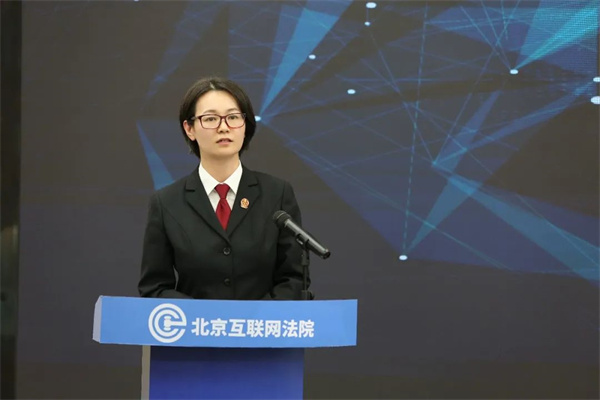
Deputy head of the intellectual property judges panel of the Beijing Internet Court Zhu Ge. [Photo/Beijing Internet Court]
Traditionally, short video platforms were only information storage space which did not bear the prior review obligation. They were only liable when they failed to take necessary action once notified by the rightful owner. But now, the deep integration with other industries has brought about multiple business models for short video platforms and their relations with the users have grown more complex. Therefore, comprehensive considerations on factors such as the business model of the platform, the technology involved, the extent of the infringement, whether it made direct profit, and the popularity of the works, are needed to determine whether the platform is directly or indirectly liable for the infringement.
At the briefing, the BIC also released ten typical cases on copyright infringement involving short videos.

 Judicial White Paper
Judicial White Paper
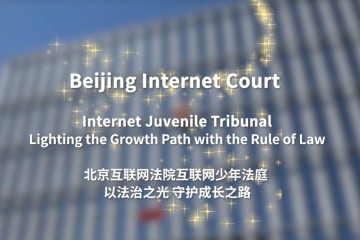 Play
Play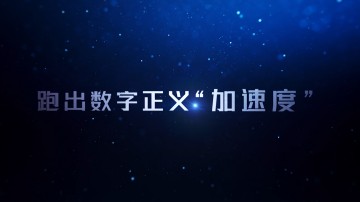 Play
Play Online Lawsuit Guide
Online Lawsuit Guide Beijing Internet Court Lawsuit Service WeChat Account
Beijing Internet Court Lawsuit Service WeChat Account  Beijing Internet Court WeChat Account
Beijing Internet Court WeChat Account